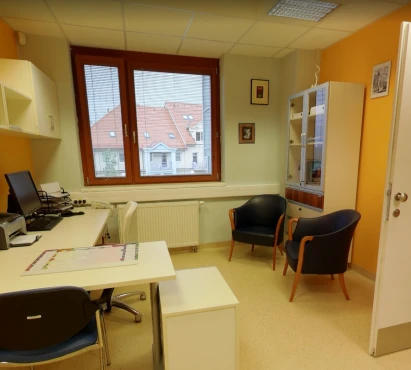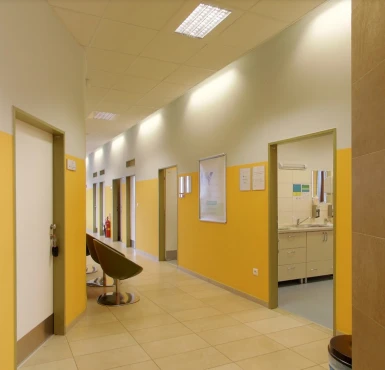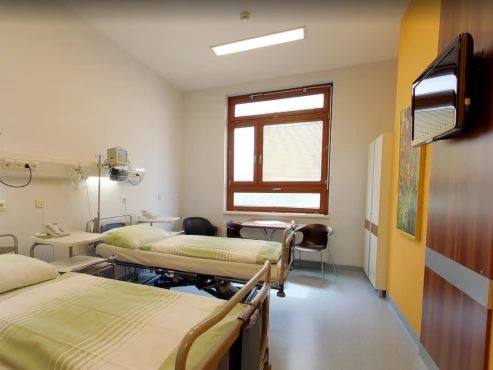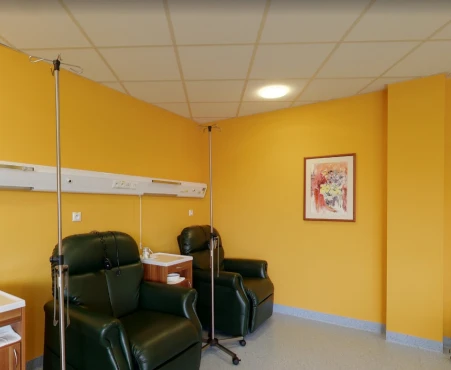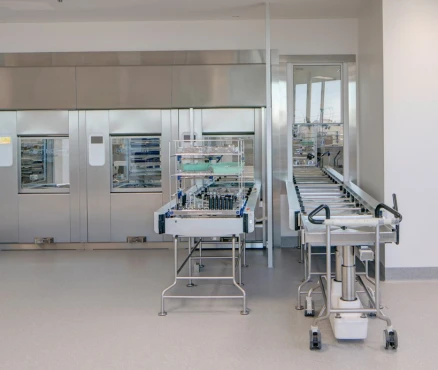Introduction & Classification of Chronic Lymphoid Leukemia
Chronic Lymphocytic Leukemia (CLL) is a type of cancer that affects the blood and bone marrow and is characterized by the overproduction of abnormal lymphocytes, a type of white blood cell.
CLL is the most common form of leukemia in adults, primarily affecting older individuals with a median age of diagnosis around 70 years. It is more common in men than women, with a male-to-female ratio of approximately 1.7:1. In the United States, it is estimated that there will be about 21,250 new cases of CLL and about 4,320 deaths from the disease in 2024 [seer.cancer.gov].
CLL is classified based on the characteristics of the lymphocytes and the genetic mutations they harbor [D'Arena et al., 2024]. The main subtypes include:
- Typical CLL is the most common form and typically progresses slowly. Typical CCL patients with mutated immunoglobulin heavy chain variable region (IGHV) genes generally have a better prognosis.
- Atypical CLL may have more aggressive clinical behavior and distinct cellular morphology, such as CD38 cellular surface protein positivity and unmutated IGHV.
- Prolymphocytic Leukemia (PLL) is an aggressive form of CLL characterized by a higher number of prolymphocytes >55% in the blood and often requires more intensive treatment than typical CLL.
Stages of CLL
There are two basic staging systems for CLL – Rai and Binet; and one prognostic system for meta-staging called the CLL International Prognostic Index (CLL-IPI), released in 2016 [lls.org].
The Rai staging system monitors the range of abnormal increases in lymphocyte numbers as a primary risk assessment criteria:
- Low Risk (Stage 0): Abnormal increase in the number of lymphocytes in the blood and marrow
- Intermediate Risk (Stage I & II):
- Abnormal increase in the number of lymphocytes in the circulating blood and the marrow PLUS enlarged lymph nodes
- OR Abnormal increase in lymphocytes in the circulating blood and the marrow PLUS Enlarged spleen and/or liver.
- High Risk (Stages III & IV):
- Abnormal increase in the number of lymphocytes in the circulating blood and the marrow PLUS anemia (hemoglobin <11g/dL)
- OR Abnormal increase in the number of lymphocytes in the circulating blood and the marrow PLUS thrombocytopenia (platelet counts <100,000/uL).
On the other hand, the Binet Staging System registers positive or negative changes in the level of red blood cells (hemoglobin count) and platelets:
- Stage A: no anemia (hemoglobin ≥10g/dL), no thrombocytopenia (platelets ≥100,000/mm<sup>3</sup>), and less than three areas of lymphoid tissue enlargement.
- Stage B: no anemia (hemoglobin ≥10g/dL), no thrombocytopenia (platelets ≥100,000/mm<sup>3</sup>), and three or more areas of lymphoid tissue enlargement.
- Stage C: anemia (hemoglobin <10g/dL), thrombocytopenia (platelets <100,000/mm<sup>3</sup>), any number of areas of lymphoid tissue enlargement
Meanwhile, the CLL-IPI combines five independent prognostic factors:
- TP53 gene deleted or mutated = 4 points
- Unmutated IGHV = 2 points
- Serum beta-2 microglobulin concentration > 3.5 mg/L = 2 points
- Rai Stage I - V or Binet Stage B - C = 1 point
- Patient age > 65 years = 1 point
According to CLL-IPI "low risk" category is 0-1 point (do not treat recommendations), "intermediate risk" is 2-3 points (do not treat unless the disease is highly symptomatic), "high risk" - 4-6 points (treat unless the patient is asymptomatic), "very high risk" – 7-10 (use novel agents rather than chemotherapy).
Algorithm of Diagnosis
What evaluations do CLL patients undergo to identify the best treatment strategy?
The diagnosis of CLL is established by immunophenotyping of peripheral blood – detecting the presence of ≥5 × 10<sup>9</sup>/l monoclonal B lymphocytes with the clonality of the cells confirmed by demonstrating light chain restriction using flow cytometry. LN biopsy and/or bone marrow biopsy may be helpful if immunophenotyping is not conclusive for the diagnosis [ESMO, 2021].
The following diagnostic work-up serves as a tool for the precise staging of CLL and includes:
- Cytogenetics (FISH) and molecular genetics for TP53 mutation or del(17p);
- GHV mutational status;
- Complete blood count and differential;
- Physical examination.
Phases of Treatment
How is CLL treatment structured?
Watchful Waiting
For patients with early-stage CLL (Rai stage 0, I, or Binet stage A) who are asymptomatic, immediate treatment may not be necessary. Instead, a watchful waiting approach is often adopted, regularly monitoring blood counts and clinical status. Additionally, imaging methods, such as CT scans and MRI, can be used for symptomatic pulmonary / pelvic / neck patients.
First-Line Treatment
What are the initial treatments for CLL?
For CLL at advanced Rai stage II-IV or Binet stage B-C, Bruton tyrosine kinase inhibitors (BTKis) such as ibrutinib are used until the progression of the disease. In addition, the United States Food and Drug Administration (FDA) and European Medicines Agency (EMA) have recently approved the combination of venetoclax plus obinutuzumab as first-line therapy for CLL with TP53 gene or del(17p) mutations [ESMO, 2021].
Second-Line Treatment
What options are available if initial treatments fail?
For patients whose disease progresses after first-line therapy, second-line treatments are available:
- Targeted Therapy: Continued use of BTK inhibitors (ibrutinib, acalabrutinib) or switching to venetoclax-based regimens.
- Immunotherapy:
- CAR-T Cell Therapy: Chimeric Antigen Receptor T-cell therapy, where a patient's T-cells are modified to target CLL cells.
- Alemtuzumab: An anti-CD52 antibody for patients with heavily pretreated CLL.
- Stem Cell Transplantation: Allogeneic stem cell transplantation may be considered for younger patients with high-risk disease or those with refractory CLL.
Prognosis and Survival Rates
What are the survival rates and factors affecting prognosis?
Generally, from all people with CLL, around 85% of individuals will survive their CLL for five years or more after being diagnosed. This applies to all ages. However, age does seem to play a role in five-year survival outcomes:
- for those younger than 60 - 95% will survive;
- for those aged between 60 and 69 – 90%;
- for those aged between the ages of 70 and79 – more than 80%;
- for those who are 80 or older – around 65%.
Additionally, there is a statistics published by Cancer Research UK on five-year survival rates connected to the Chronic Lymphocytic Leukaemia International Prognostic Index (CLL-IPI):
- Low-risk group – 95% of patients will survive;
- Intermediate risk group – 80%;
- High-risk group – 65%;
- Very high-risk group – 25.
Follow-Up and Monitoring
How do you ensure continued health after treatment?
During follow-up strategy in patients with CLL in remission, according to the European Society for Medical Oncology (ESMO), there are CBC, physical examination, and serum chemistry (including serum immunoglobulin and direct antiglobulin test) every three to twelve months in asymptomatic patients [ESMO, 2021].































































